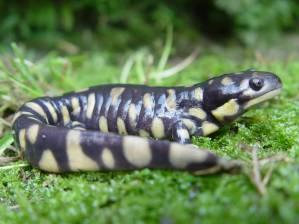
Georgia Abounds in Salamanders, Frogs and Toads

Amphibians are found in swamps, forests, grasslands, mountains, and yes, even deserts. However, since amphibians have moist, gelatinous eggs, all rely on moisture for at least part of their life cycle. While many will leave wetlands to complete their adult stages, some spend their entire lives in aquatic habitats.
In the 80's scientist began to notice a worldwide decline in amphibian populations. In response, action was taken to begin to learn more about these disappearing creatures. Studies include understanding amphibian populations and life history traits, measuring and monitoring environmental characteristics, and conducting research into potential causes of decline.
In Georgia there are several opportunities for individuals interested in learning more about amphibians. Listed below are a couple of Georgia websites. Most of these sites have fantastic photographs. Some sites have wonderful recordings of frog and toad calls so that you can familiarize yourself with species at your local watering hole.
Amphibian Links:
Georgia Frog Identification (1.3MB) ***LINK TO DOCUMENT***
Georgia Salamander Identification (1.2 MB) ***LINK TO DOCUMENT***
Georgia Wildlife Web ***LINK NOT FOUND***
UGA Herpetology Program at Savannah River Ecology Laboratory
Georgia DNR Wildlife Nongame Animals and Plants
The Frogs and Toads of Georgia
Center for North American Herpetology
USGS Amphibian Research and Monitoring Initiative
Partners in Amphibian and Reptile Conservation (PARC)
Another site from UGA with great photographs